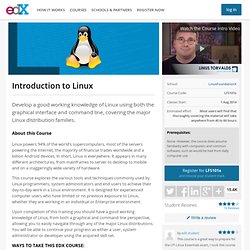

Créer un lien symbolique. 18 Things to Do After Installing Fedora 21 Workstation. If you’re a Fedora fan, I’m sure that you know that Fedora 21 has been released a few days ago, Fedora 21 came with many new changes which you can view in our last article about it.

Also you may view the installation guide for Fedora 21 that we published few days ago. In this article, we’ll explain the most important things to do after installing Fedora 21 Workstation on your computer. Just to make sure that you have the latest updates from Fedora 21 repositories, run this command. $ sudo yum update 1. The default GUI for Fedora 21 Workstation is Gnome Shell, which is very customizable in fact. . $ sudo yum install gnome-tweak-tool Open “Gnome Tweak Tool” from the applications menu, and you’ll be able to configure the GUI options easily, you can browse available tabs to see the available options. 2. Extensions are the most important addons to install after setting up Fedora 21. All what you’ve to do is to enter the website and choose the extensions you want and install them in a single click.
Using “module” command — This is ARGO, the ICTP HPC cluster. The module command will let you load and unload the environment needed to run specific applications or use specific libraries.

It is especially useful when you need to have different versions of the same software/library or the same software/library compiled against different compilers. In our cluster, for instance, we have both GNU and Intel compilers, therefore, in order to use MPI when we compile using one of those compilers we need to have two different versions of OpenMPI, but instead of having binaries name like mpicc-1.4.3-intel-11.1 or similar we use module to update the PATH environment variable, so that after loading the specific module for openmpi/intel we will just run mpicc and mpirun. The syntax of the module command is the following: module <subcommand> [<arguments>] <subcommand> may or may not require one or more <arguments> A partial list of available subcommands follows: A detailed list of all subcommands is shown by running the command module help.
Copier le contenu d'un fichier dans un autre. Les commandes fondamentales de Linux - Linux France. Premier auteur (jusqu'à 1998): Armand Delcros Wikisé et étendu par (depuis 2009): Nat Makarevitch Contributions et remerciements Nat Makarevitch pour ses nombreuses critiques et corrections, Thomas Ortega pour ses bienveillantes remarques et la remise en forme HTML du document, Kim Ashue pour sa relecture, Philibert de Mercey pour son aide à la mise en page, Fanthomas pour sa relecture.

L'objectif de ce document est d'enseigner les commandes fondamentales de Linux (et donc d'Unix). Objectifs Nous explorerons ce qu'offre le shell nommé « bash », le plus utilisé sous Linux, donc une partie de ce que peut faire un utilisateur capable de diriger la machine en créant des lignes de commandes plutôt qu'en se contentant d'un cliquodrôme. Manœuvres préliminaires Pour apprendre il faut pratiquer, donc disposer d'une machine fonctionnant sous Linux qui n'est pas sérieusement exploitée. Si vous en avez déjà une négligez la présente section (passez à la suivante). Émulateur. Trucs:Espace disque occupé par un répertoire.
Introduction to Linux. Linux powers 94% of the world’s supercomputers, most of the servers powering the Internet, the majority of financial trades worldwide and a billion Android devices.

In short, Linux is everywhere. It appears in many different architectures, from mainframes to server to desktop to mobile and on a staggeringly wide variety of hardware. This course explores the various tools and techniques commonly used by Linux programmers, system administrators and end users to achieve their day-to-day work in a Linux environment. It is designed for experienced computer users who have limited or no previous exposure to Linux, whether they are working in an individual or Enterprise environment.
Upon completion of this training you should have a good working knowledge of Linux, from both a graphical and command line perspective, allowing you to easily navigate through any of the major Linux distributions. Simply Audit this Course Can't commit to all of the lectures, assignments, and tests?